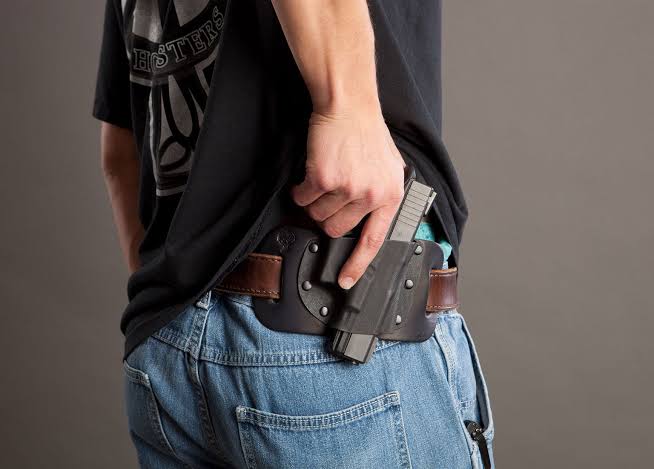Table of Contents
- Benefits of Concealed Carry
- Choosing the Right Holster
- Ensuring Comfort
- Accessibility Factors
- Prioritizing Safety
- Dressing in Layers
- Understanding Legal Considerations
- Importance of Regular Training
Benefits of Concealed Carry
Concealed carry offers a range of advantages for personal security. One of the primary benefits is the ability to protect oneself and those around you during threatening situations. This sense of security can be empowering, especially in uncertain environments. Additionally, effectively carrying your firearm without being noticeable reduces the risk of making yourself a target. When a potential assailant cannot identify who may be armed, it creates uncertainty that can deter criminal activity. Furthermore, concealed carry allows for a more discreet presence in public places, minimizing unnecessary attention and anxiety among other citizens.
Choosing the Right Holster
Choosing the right holster is essential for concealed carry. Various options are available, each catering to distinct needs and preferences. For instance, concealed carry belly bands offer versatility and ease of use, making them popular among firearm carriers. Belly bands are typically made from comfortable, elastic materials and can be worn around the waist, providing a secure and snug fit. This type of holster is especially advantageous for people needing to wear different outfits or engage in various physical activities. Additionally, belly bands often come with compartments for additional items such as extra magazines, making them a practical solution for many concealed carry enthusiasts.
Ensuring Comfort
Comfort is an essential aspect of concealed carry. An uncomfortable setup can lead to frequent adjustments, which might inadvertently reveal your firearm. The key to comfort lies in choosing a natural and seamless holster. When selecting a holster, it’s crucial to consider materials, adjustability, and how well it fits with your body and clothing. Opting for breathable, soft materials can reduce irritation and chafing, especially when wearing the holster for extended periods. Also, customizable features that adjust tightness and positioning can significantly enhance overall comfort. Ultimately, comfort influences how consistently and effectively you can carry your firearm, thus considerably aiding successful concealed carry practices.
Accessibility Factors
Another critical consideration is accessibility. When the need arises, being able to draw your weapon quickly is vital. Fast accessibility can be crucial in a life-threatening scenario. Practicing your draw helps ensure tour movements are smooth and instinctual. However, this should always be balanced with ensuring the firearm remains concealed to avoid alarming others or becoming an immediate target. Your holster should allow for a quick, unobstructed draw while keeping the gun secure when not in use. The placement of the holster and ease of access without compromising concealment are critical factors in achieving readiness and discretion.
Prioritizing Safety
Safety should be a top priority for anyone carrying a concealed weapon. It includes ensuring your holster has appropriate retention features and practicing solid trigger discipline. A holster with good retention will secure the firearm firmly, preventing it from falling out during daily activities. Ensuring good trigger discipline involves refraining from touching the trigger until you are prepared to fire, which can help prevent accidental firing. Frequently check your equipment for any signs of damage and replace parts when needed to ensure safety and proper operation. Ensuring all parts of your holster work correctly, including the retention strap and clips, can prevent avoidable accidents. Keeping up with these safety protocols is essential to protecting yourself and others.
Dressing in Layers
Layering your clothing is a valuable strategy for better concealing your firearm. It’s handy during colder months when thicker, layered clothing is the norm. Wearing a jacket, sweater, or even a flannel shirt can help obscure the outline of your firearm, making it less noticeable to others. However, choosing suitable fabrics and designs can help you stay concealed without overheating, even in warmer climates. Lightweight, breathable fabrics and looser-fitting garments can provide adequate concealment while ensuring you remain comfortable in hotter weather. Selecting stylish yet functional clothing that aligns with your daily activities can make concealed carry a seamless part of your routine.
Understanding Legal Considerations
Understanding the laws surrounding concealed carry in your area is crucial. It includes knowing where you can and cannot carry your firearm and any specific applicable regulations. Not being aware of these laws can result in severe legal repercussions. Each state has its own set of rules regarding concealed carry, including permit requirements, restricted areas, and reciprocity with other states. Staying informed about these legal considerations will ensure you carry your firearm responsibly and within the bounds of the law.
Importance of Regular Training
Regular training is essential for maintaining proficiency and ensuring safety when carrying a concealed weapon. It includes practicing drawing your gun, improving shooting accuracy, and participating in scenario-based training. Regular training aids in developing muscle memory, enabling rapid and efficient responses in high-pressure circumstances. Engage in drills that simulate real-life scenarios to prepare yourself better for unexpected events. Additionally, consider enrolling in advanced training courses to develop your skills and knowledge further. Regular, structured training is imperative for staying sharp and competent in concealed carry practices.

